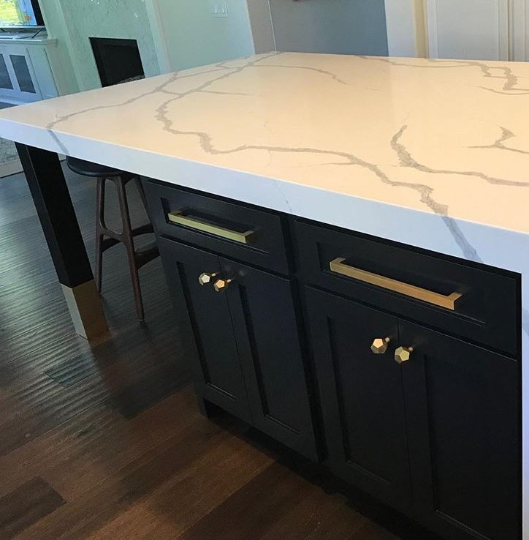Reinvent Your Kitchen's Look with One-of-a-kind Legs For Kitchen Island Accessories
Reinvent Your Kitchen's Look with One-of-a-kind Legs For Kitchen Island Accessories
Blog Article
Crucial Variables to Take Into Consideration When Choosing Legs For Kitchen Area Island
Choosing the appropriate legs for a kitchen area island involves a cautious assessment of multiple aspects that can considerably affect both functionality and aesthetic allure. As we explore these components, it becomes clear that each decision can have far-ranging implications for the general cooking area experience.
Material Options
When choosing legs for a cooking area island, comprehending the different product options is necessary for achieving both aesthetic charm and architectural integrity (Legs For Kitchen Island). The option of product dramatically influences not only the longevity of the island but also its general layout and capability
Wood is a prominent option, providing heat and versatility. Solid hardwoods, such as oak or maple, supply toughness and can be stained or painted to match the kitchen design. Steel legs, usually made from stainless-steel or wrought iron, contribute a modern and industrial feel while making sure toughness and security. These products are immune to put on and can sustain significant weight, making them excellent for bigger islands.
Another option is crafted products, like MDF or plywood, which can be a lot more economical while still providing a series of finishes. However, they might not supply the exact same level of security as strong wood or metal. Last but not least, products such as acrylic or glass can create a modern appearance, though they may require added support to guarantee security.
Ultimately, the option of material for cooking area island legs must align with the wanted performance and the overall motif of the kitchen area.
Design and Style

When thinking about style, the shape and finish of the legs are vital. Tapered legs can offer a sense of agility and sophistication, while thicker, a lot more robust legs can share stamina and stability. In addition, the finish-- be it repainted, stained, or all-natural-- must match the cabinetry and kitchen counter materials to produce a unified appearance.
Additionally, the design of the legs can likewise mirror individual taste. Personalized or decorative legs, such as those featuring complex makings or distinct geometric shapes, can function as centerpieces, adding character and personality to the kitchen area. Inevitably, the right selection will not just enhance functionality but also elevate the aesthetic allure, making the cooking area island a standout attribute of the home.
Elevation Factors To Consider
Selecting the appropriate height for cooking area island legs is vital, as it straight impacts both performance and convenience. The standard height for a kitchen area island commonly varies from 36 to 42 inches, aligning with common countertop heights.

It is likewise important to account for individuals' heights and choices. Personalizing the height can make certain a comfortable experience for all household members, making the cooking area island a much more enjoyable and useful area.
Weight Assistance
Guaranteeing ample weight support for cooking area island legs is important for both safety and security and performance. The cooking area island typically offers multiple objectives, including cooking, eating, and additional storage space, demanding a robust assistance framework. When selecting legs, it is vital to consider the overall weight capability called for based on the island's meant usage and the products that will be positioned on it.
The selection of product for the legs plays a significant function in their weight-bearing capacities. Strong wood, metal, and durable compounds usually provide exceptional stamina contrasted to lighter products. In addition, the design of the legs-- whether they are straight, tapered, or have a pedestal type-- can influence their capability to disperse weight properly throughout the framework.
Always consult the manufacturer's requirements relating to tons limits to ensure that the legs can maintain the designated weight without compromising safety and security. In recap, selecting kitchen island legs with ample weight support is important for developing a useful and risk-free culinary room.
Setup and Upkeep
Appropriate installation and linked here upkeep of kitchen island legs are critical for making sure longevity and security. To begin, it is crucial to comply with the manufacturer's guidelines throughout installation. This commonly involves safeguarding the legs to the island base utilizing appropriate bolts, making certain that the legs are degree and straightened. Using a degree tool can assist protect against wobbling and boost the overall aesthetic allure of the kitchen island.
As soon as mounted, regular maintenance is needed to maintain the honesty and look of the legs - Legs For Kitchen Island. For wooden legs, periodic cleaning with a moist fabric and application of appropriate timber gloss can protect against dampness damages and maintain their finish. Metal legs may require a gentle cleaning service to eliminate grease and gunk, complied with by a dry fabric to stop corrosion development
Furthermore, examine the legs frequently for signs of wear or damages, such as cracks or loosened joints. Tightening screws or screws as needed can also helpful hints extend the lifespan of the legs. By sticking to these setup and upkeep methods, homeowners can make sure that their kitchen island continues to be durable and aesthetically appealing for many years ahead.
Final Thought

Aesthetic coherence is vital in picking the style and design of why not try here legs for a kitchen area island, as these components greatly influence the general atmosphere of the room. Conical legs can provide a sense of lightness and beauty, while thicker, more robust legs can communicate toughness and stability.Picking the proper height for kitchen area island legs is critical, as it directly influences both capability and convenience. In recap, picking kitchen island legs with adequate weight support is important for producing a practical and risk-free culinary space.
In conclusion, selecting legs for a kitchen island necessitates careful factor to consider of numerous variables, consisting of product choices, style, height, weight assistance, and installment.
Report this page